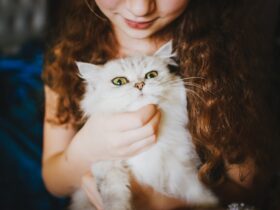Introduction
Bengal cats are known for their wild appearance and energetic nature. With their distinctive markings and playful personalities, these felines have become popular among cat enthusiasts. In this comprehensive guide, we’ll explore everything you need to know about Bengal cats, including their history, temperament, care requirements, and fun facts.
History of the Bengal Cat
The Bengal cat breed is relatively new, with its origins tracing back to the 1960s. The breed was developed by breeding domestic cats with the Asian leopard cat, a small wild cat native to Southeast Asia. The goal was to create a cat with the appearance of a wild feline but with the temperament of a domestic cat. Jean Mill, an American breeder, is credited with creating the first Bengal cat by crossing an Asian leopard cat with a domestic cat.
Over the years, selective breeding helped develop the Bengal’s striking coat pattern and friendly demeanor. The breed was officially recognized by cat registries like The International Cat Association (TICA) in the 1980s.
Physical Characteristics
Bengal cats are medium to large-sized cats with a muscular build. Their wild ancestry is evident in their appearance, particularly in their coat, which is one of their most distinctive features.
- Coat: The Bengal’s coat is short, dense, and soft to the touch. The most striking aspect of their coat is the pattern, which can be spotted or marbled. The spots resemble those of a leopard, while the marbled pattern features swirls of color. Bengals come in a variety of colors, including brown, snow, and silver.
- Eyes: Bengal cats have large, almond-shaped eyes that can range in color from green to gold.
- Ears: Their ears are small and rounded, adding to their wild look.
- Tail: Bengals have long, thick tails with a rounded tip, often with black markings.
Temperament and Personality
Bengal cats are known for their high energy levels and playful nature. They are curious, intelligent, and love to explore their surroundings. If you’re considering adopting a Bengal, it’s essential to understand their unique personality traits.
- Active and Energetic: Bengals are not couch potatoes. They need plenty of physical activity and mental stimulation to keep them happy. They enjoy climbing, jumping, and playing with interactive toys.
- Affectionate: Despite their wild appearance, Bengal cats are affectionate and form strong bonds with their owners. They enjoy being around people and often follow their humans from room to room.
- Vocal: Bengals are known for being talkative. They use a variety of sounds, including meows, chirps, and trills, to communicate with their owners.
- Social: These cats are social animals and get along well with other pets, including dogs, and children. However, they may not be the best choice for a household with small, delicate pets like birds or rodents, as their hunting instincts can kick in.
Care Requirements
Owning a Bengal cat comes with specific care requirements. While they are generally healthy and low-maintenance compared to some other breeds, there are essential aspects of their care to consider.
1. Diet and Nutrition
Bengal cats require a balanced diet rich in protein to support their active lifestyle. You can feed them high-quality commercial cat food or a raw diet, but it’s crucial to consult with your veterinarian to ensure they receive the necessary nutrients.
- Protein-Rich Diet: Look for cat food with meat as the primary ingredient. Avoid foods with fillers like grains and by-products.
- Hydration: Bengals should have access to fresh water at all times. Some Bengal cats are fascinated by water and may enjoy drinking from a fountain or even playing with it.
- Supplements: Omega-3 fatty acids and taurine are essential for maintaining a healthy coat and overall well-being.
2. Grooming
Bengal cats have short coats that are relatively easy to maintain. However, regular grooming helps reduce shedding and keeps their coat looking its best.
- Brushing: Brush your Bengal cat once a week to remove loose hair and prevent matting.
- Bathing: Bengals are generally clean cats, and regular bathing is not necessary. However, some Bengals enjoy water and may tolerate the occasional bath.
- Nail Trimming: Trim your cat’s nails every few weeks to prevent overgrowth and keep them comfortable.
3. Exercise and Enrichment
Due to their high energy levels, Bengals need plenty of physical and mental stimulation. Providing them with opportunities to exercise and explore is crucial for their well-being.
- Playtime: Engage your Bengal in daily play sessions using interactive toys like feather wands or laser pointers.
- Climbing and Scratching: Invest in cat trees, shelves, and scratching posts to satisfy their natural instincts to climb and scratch.
- Puzzle Toys: Mental stimulation is just as important as physical exercise. Puzzle toys and treat-dispensing toys can keep your Bengal entertained and mentally sharp.
4. Health Care
Bengal cats are generally healthy, but they can be prone to certain health issues. Regular vet check-ups and preventive care are essential to keep them in good shape.
- Vaccinations: Ensure your Bengal receives all necessary vaccinations to protect them from common feline diseases.
- Parasite Control: Regular flea, tick, and worm prevention are crucial, especially if your Bengal spends time outdoors.
- Dental Care: Dental hygiene is vital for Bengals. Brush their teeth regularly or provide dental treats and toys to prevent plaque buildup.
- Genetic Testing: Some Bengals may be prone to hereditary conditions such as hypertrophic cardiomyopathy (HCM). Genetic testing can help identify potential risks.
Bengal Cats and Children
Bengal cats can make excellent companions for children due to their playful and social nature. They are often tolerant of kids and may even enjoy playing with them. However, it’s essential to teach children how to handle and interact with the cat gently.
Bengal Cats and Other Pets
Bengals are generally good with other pets, especially if they are introduced at a young age. They can get along well with dogs and other cats, but their hunting instincts may make them a poor choice for homes with small animals like birds or hamsters.
Training and Behavior
Bengal cats are highly intelligent and can be trained to perform tricks, walk on a leash, or use a litter box. However, they can also be stubborn and independent, so patience and positive reinforcement are key when training them.
- Litter Training: Bengals are typically easy to litter train, but it’s essential to provide a clean and accessible litter box.
- Leash Training: If you want to take your Bengal cat on outdoor adventures, start leash training them at a young age using a harness and leash.
- Behavioral Issues: Bengals can develop behavioral problems if they don’t receive enough attention or stimulation. Boredom can lead to destructive behavior, such as scratching furniture or knocking over objects.
Fun Facts About Bengal Cats
- Water Lovers: Unlike many other cat breeds, Bengal cats often enjoy playing with water. Don’t be surprised if your Bengal cat tries to join you in the shower or splashes around in the sink.
- Great Jumpers: Bengals are known for their incredible jumping abilities. They can leap to impressive heights, so be prepared to find them perched on high shelves or cabinets.
- Dog-Like Behavior: Many Bengal owners describe their cats as having dog-like traits. They may fetch toys, follow you around the house, and even enjoy walking on a leash.
- Hypoallergenic: While no cat is entirely hypoallergenic, some people with cat allergies find they can tolerate Bengal cats better than other breeds due to their unique coat.
Is a Bengal Cat Right for You?
Bengal cats are not for everyone. Their high energy levels and need for attention can be challenging for some owners. However, if you’re looking for an active, intelligent, and affectionate feline companion, the Bengal cat might be the perfect fit for your household.
Before bringing a Bengal cat into your home, consider the following:
- Time Commitment: Do you have the time to engage in regular play and provide mental stimulation?
- Space: Do you have enough space for a Bengal cat to explore and climb?
- Other Pets: Are your other pets compatible with an active and curious Bengal cat?
- Financial Commitment: Bengals can be more expensive than other breeds due to their unique characteristics and care needs.
Conclusion
Bengal cats are a unique and captivating breed that offers a mix of wild beauty and affectionate companionship. With their striking appearance, playful nature, and intelligent minds, they can make a delightful addition to the right household. However, they do require a commitment to their care and well-being. If you’re ready to meet their needs, a Bengal cat can bring endless joy and entertainment into your life.














Leave a Reply